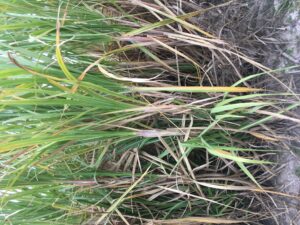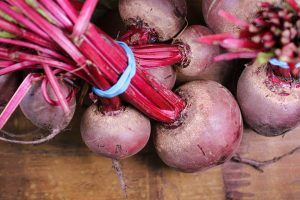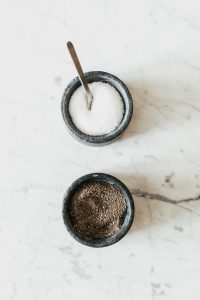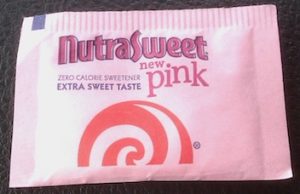
Most of us know that too much sugar is unhealthy for you. But is it the sugar, how much you consume everyday, or the type of sugar you use – processed, raw or artificial sugar? It’s all three.
Your body uses raw sugar differently from processed, refined sugar. Your body accepts the artificial sweeteners the same way it uptakes processed sugar, but there’s nothing inside artificial sugar but chemicals. So, the type of sugar you eat is very important.
Sweet Grass
Most sugar that we consume today comes from the juice of the tropical grass known as sugar cane (saccharum officinarum). The sugar in the grass is made in the leaves of the sugar cane plant by the natural process photosynthesis, and is stored as a sweet juice in the fibers of the stalks.

The plant is 6.5 feet to 16.5 feet feet tall. It has stout, jointed, fibrous stalks that are rich in sucrose, which accumulates in the stalk internodes. A field of sugar cane can yield thousands of tons of raw sugar, and they literally light the field on fire when they cultivate the sugar cane. Sugar cane is a grass, and they burn off the leaves but keep the sugar stalk from catching on fire.
The natural sugar in the cane stalk is separated from the remaining plant material at the sugar mill. This is how the sugar is extracted from the cane plant:
- At the mill, the cane from the plant is crushed by large rollers to extract the sweet juice;
- The extracted juice is then clarified to remove any soil and plant impurities;
- The juice is concentrated into a syrup by boiling off any excess water, raw sugar crystals are added to the concentrate in a vacuum pan, and this is boiled again until sugar crystals form and grow;
- The boiled mixture is spun to separate the molasses from the crystals, which are tumble-dried and placed in large storage bins for transport to bulk sugar terminals and refineries;
- At the refinery, the raw sugar crystals are washed and dissolved in hot water to form syrup;
- Phosphoric acid and lime are added to the melted sugar to remove any impurities in the clarification process;
- The syrup is pressure filtered through cloth, passed through decolorizing columns containing activated carbon, boiled again in another vacuum pan, and seeded with fine sugar crystals;
- When the crystals are large enough, they are discharged from the pan, centrifuged to remove excess liquid and then tumble-dried;
- The raw sugar is crystallized, dried, and packaged as both raw sugar and refined white crystal sugars, as brown sugars, liquid sugar, and syrups;
- Most of these sugars require further processing at refineries in order to meet food manufacturers’ standards for processed foods and drinks, and to package for consumer preferences.
As you can see, raw and natural sugar changes a lot before it is added to processed foods and is packaged as refined white sugar on restaurant tabletops.

Beet Sugar
Beet sugar processing is similar to cane sugar processing, but it is done in one continuous process skipping over the raw sugar stage.
The sugar beets are washed, sliced and soaked in hot water (not boiled) to separate the sugar-containing juice from the beet fiber. The juice is purified, filtered, concentrated and dried in a series of steps similar to cane sugar processing.
The Different Types of Processed Sugar
The most common types of processed sugar are available in many forms, but I suggest that you avoid these forms:

- Granulated Sugars
- Brown Sugars
- Liquid Sugars
Raw Sugar Isn’t The Bad Guy
Don’t be afraid of raw sugar, even if you are diabetic – it’s your healthiest and most natural choice. Just don’t eat too much everyday, and use raw sugar in moderation. You can enjoy sweet things if you control the amount of sugar you eat and drink.
Sugar itself isn’t the “bad guy.” For hundred of years, raw sugar (sucrose) was added safely to the food supply. Natural sugars are essential to all life, and are only 15 calories per teaspoon.
Raw sugar is a complex carb and the most natural source of energy that your body can assimilate. It’s the simple carbs and processed sugars that send your insulin into trauma.
Sugar cane juice is a good source of glucose, which actually helps re-hydrate your body and provides you a boost of healthy energy.
Sugarcane juice is considered an alkaline forming food because before it’s boiled during refining, there is a high concentration of:
- calcium
- magnesium
- potassium
- iron
- manganese found in sugarcane.
Remember that diseases, like cancer, cannot survive in an alkaline environment, and that you receive your energy from glucose when you can maintain a consistent insulin level in your bloodstream. Complex carbohydrates found in whole grains, fruits, and vegetables are the best sources of naturally occurring sugars needed to satisfy your body’s energy demands.

And, of course, avoid the artificial sugars.
The Problem
No one needs the pounds of added refined sugars found in our modern food supply. So here’s a problem: consumers have become addicted to sweeter and sweeter tastes, and they crave larger and larger portions of sweetened foods to satisfy that addiction.
Emotional and psychological dependence on sweet foods and drinks – sugar addiction – is the real cause of concern. Processed foods and refined grains have additional refined sugars, and these foods are stored in your body after you digest them. Hence, weight gain, diabetes, hypoglycemia, kidney stones, and digestive issues.
The next time you are at the grocery store, buy a stalk of sugar cane and try grating it for some real natural sweetness in your food and drinks. The answer to this question is to use raw and natural sugar in moderation. Avoid buying processed foods with added sugars, and never turn to the artificial sweeteners as your solution to eating all the sweetness you desire without penalty.
That’s your answer.
_____________
If you want to learn more about healthy eating, contact me at janethull.com. Remember that you are never alone when you are looking for good health!
_____________
Disclaimer: This article is for informational purposes only, and is educational in nature. The FDA may not have evaluated some of the statements. This article is not intended to diagnose, treat, cure, or prevent any disease. Please discuss with your own, qualified health care provider before adding supplements or making any changes to your dietary program.
Before taking vitamins, consult your doctor; pre-existing medical conditions or medications you are taking can affect how your body responds to multivitamins.
You have our permission to reprint this article if you attribute us with a live back-link to this article and the youtube links. https://janethull.com/